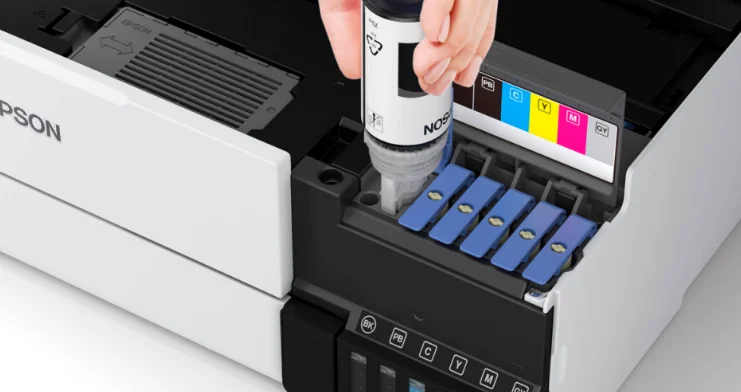Printer inks are a cornerstone of modern printing technology, pivotal to achieving high-quality
prints for both personal and professional use. The variety of printer inks available today cater to
diverse needs, from everyday document printing to specialized photo printing. Printer inks like
Inkjets delves into the different types of printer inks, their unique properties, and tips for
choosing the right ink for your needs.
Types of Printer Inks
Understanding the different types of printer inks is essential for making informed decisions
about printing. The primary categories include dye-based inks, pigment-based inks, solid inks,
and sublimation inks.
Dye-Based Inks
Dye-based inks are commonly used in consumer inkjet printers. These inks dissolve colorants in
a liquid base, which allows for vibrant, rich colors. The main advantages of dye-based inks are:
Color Range: They produce a wide gamut of colors, making them ideal for printing images and
colorful documents.
Affordability: Dye-based inks are generally cheaper than pigment-based inks, making them a
cost-effective choice for everyday printing.
However, dye-based inks are prone to fading over time and are less water-resistant compared
to pigment-based inks, making them less suitable for archival purposes.
Pigment-Based Inks
Pigment-based inks use tiny particles of solid colorant suspended in liquid. These inks are
favored for their durability and resistance to environmental factors. Key benefits include:
Longevity: Pigment-based inks are more resistant to fading, making them ideal for printing
documents and photographs intended to last for years.
Water Resistance: They are less likely to smudge or run when exposed to moisture.
The trade-off is that pigment-based inks generally produce less vibrant colors than dye-based
inks, making them less suitable for high-quality photo printing.
Solid Inks
Solid inks, used primarily in certain types of color printers, are made from wax-like blocks that
are melted during the printing process. They offer several advantages:
Environmental Friendliness: Solid inks produce less waste compared to traditional ink
cartridges, as there are no cartridges to dispose of.
Vivid Colors: They can produce vibrant and consistent colors.
However, solid inks can be more expensive and less widely available than other types of inks.
Sublimation Inks
Sublimation inks are used in dye-sublimation printers, which are popular for printing on fabrics
and other materials. These inks turn into gas without passing through a liquid state when
heated, allowing them to penetrate the surface of the material. Benefits include:
Durability: Sublimation prints are resistant to fading and can withstand washing and exposure to
sunlight.
Versatility: Ideal for printing on various materials such as textiles, ceramics, and metals.
Choosing the Right Printer Ink
Selecting the right printer ink depends on your specific printing needs:
Document Printing: For everyday document printing, dye-based inks are usually sufficient.
However, if durability and water resistance are important, consider pigment-based inks.
Photo Printing: For high-quality photo prints, dye-based inks are preferred due to their vibrant
colors. Some photo printers use a combination of dye and pigment inks to balance color quality
and longevity.
Specialized Printing: For printing on non-paper materials, such as fabrics or ceramics,
sublimation inks are the best choice.
Tips for Optimal Ink Usage
To get the most out of your printer inks, consider the following tips:
Store Properly: Keep ink cartridges in a cool, dry place to prevent them from drying out or
deteriorating.
Use Regularly: Print regularly to keep the ink flowing and prevent the nozzles from clogging.
Select the Right Paper: Use paper that is compatible with your ink type. For example, glossy
photo paper works well with dye-based inks, while matte paper is better suited for pigment-
based inks.
Conclusion
Printer inks are an essential component of achieving high-quality prints, and understanding the
different types and their applications can help you make informed decisions. Whether you need
vibrant colors for photo printing or durable prints for documents, choosing the right ink can
enhance your printing experience and ensure your prints meet your expectations. By
considering your specific needs and following best practices for ink usage, you can optimize
both the quality and longevity of your printed materials.

